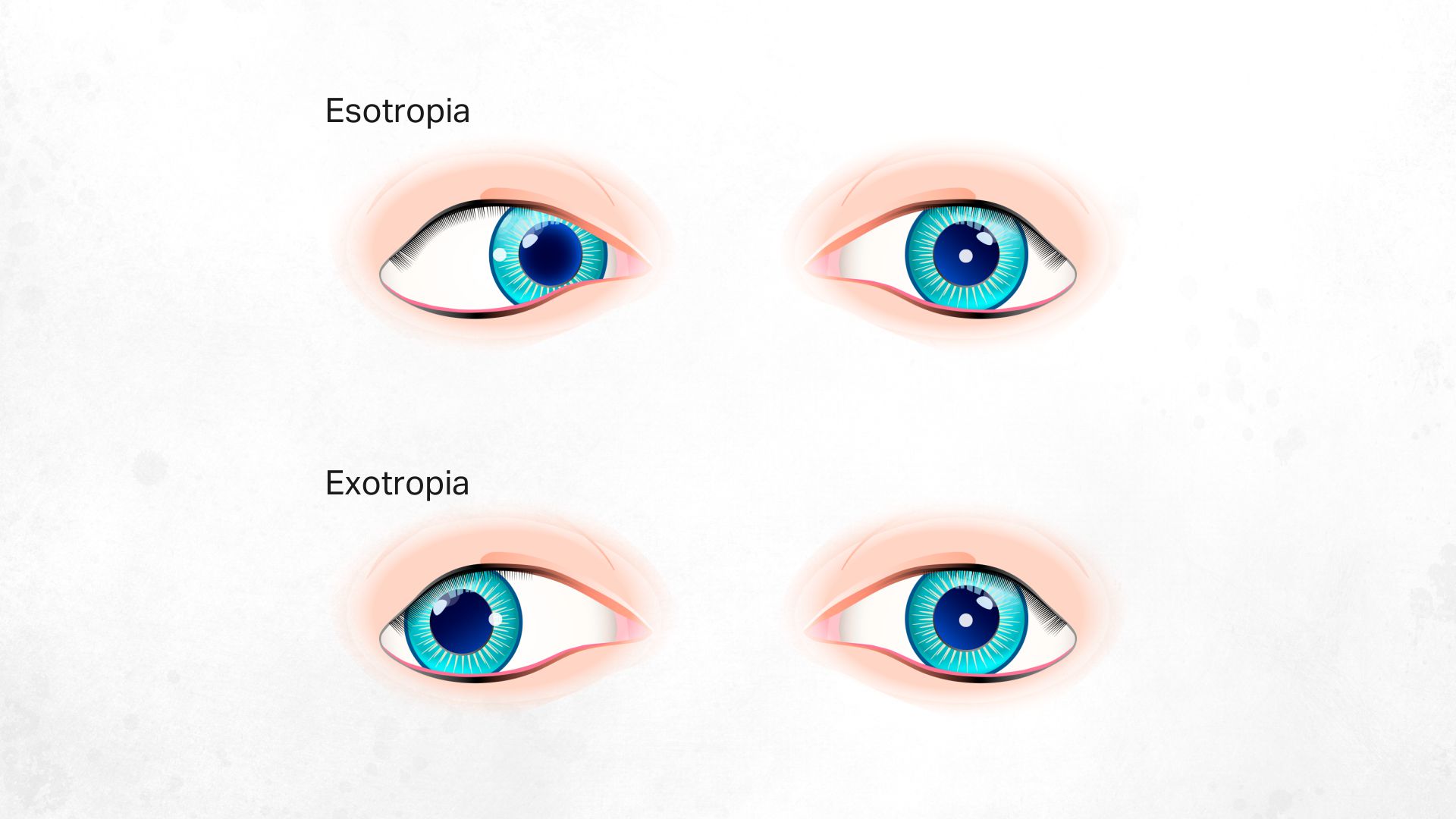Crossed Eyes is also known as Strabismus. As the name suggests, in this condition, both eyes of a person look in different directions causing double vision. So, it can also be said that your eyes find it difficult to align together when looking. Poor eye muscle control is the reason for this condition.
Hence, your brain receives two different images from both the eyes creating confusion and leading to double vision.
The condition appears mostly in infants but is also present in adults. The eyes may look up or down and even side to side. Also, one eye may look straight ahead.
Strabismus is also the manifestation of medical conditions that may include retinoblastoma, cerebral palsy, retinopathy of prematurity or others.
Classification of strabismus or crossed eyes based on direction of misaligned eyes:
- Horizontal strabismus
- Esotropia, when your eyes point inwards.
- Exotropia, when your eyes point outwards.
- Vertical strabismus
- Hypertropia, when your eyes point upward.
- Hypotropia, when your eyes point downward.
- Intermittent or constant, when it happens only sometimes. Also known as transient strabismus.
- Unilateral, when it’s always in the same eye.
- Alternating, when it happens in one eye sometimes and the other eye, at other times.
Common forms of strabismus:
- Accommodative esotropia: Often occurs when you have uncorrected farsightedness and family history of strabismus with eyes that turn in.
- Intermittent exotropia: Here, your one eye will concentrate on something while your other eye will point outwards.
- Infantile esotropia: Before your infant turns six months of age, this type of strabismus can be seen. Your infant will have their eyes turning inward significantly.
The classification of strabismus is also done on the basis of nerve issues such as oculomotor palsy, superior oblique palsy or abducens palsy which find their cause in the third, fourth and sixth cranial nerves.
Symptoms of strabismus:
- Eye strain
- Headaches
- Double vision
- Reading difficulty
- Tilting or turning head
- Covering one eye when looking
Risk factors for strabismus:
- Stroke
- Brain tumours
- Cerebral palsy
- Graves’ disease
- Neurological issues
- Down syndrome
- Poor vision in one eye
- Uncorrected refractive errors
- Hydrocephalus
- Head injuries which affect the brain regions responsible for controlling eye muscles
Complications arising from strabismus:
- Fatigue
- Eye strain
- Double vision
- Poor 3-D vision
- Blurry vision
- Lazy eye or amblyopia
You may also experience low self-esteem due to your looks.
Diagnosis of strabismus:
Your ophthalmologist will conduct a comprehensive eye examination to ascertain strabismus. This may include
- Alignment and focus test
- Eye exam after dilating pupils with eye drops
- Visual acuity test
- Eye refraction test
- Medical history examination including family history
Treatment of strabismus:
- Spectacles or contact lenses
- Prism lenses that can bend light entering your eyes to prevent double vision
- Medications such as eye drops, ointments or injections
- Eye exercises may work on certain types of strabismus
- Eye muscle surgery can help by changing the length or position of eye muscles. It is done under general anaesthesia using dissolvable stitches.
Hence, strabismus can be regulated though not preventable, if the correct measures are taken at the infant age itself.
Sharat Maxivision is the best eye hospital in Warangal. If your infant shows symptoms of strabismus, you must not delay. Our eye specialists will ensure your infant the best solutions for a bright future.
